 Your new post is loading...

|
Scooped by
Farid Mheir
|
In this report, TDWI uncovers deeper insights that give users new perspectives on business questions. AI will transform BI and the way people make decisions and act. Rather than start with a hypothesis, data analysts will begin with an AI-driven insight. Instead of querying data to prove or disprove their hypothesis, users will query data to expand or validate a machine-generated insight or recommendation—or they might act on the AI-based insight at face value. But to get to that point, AI-infused BI tools will need to gain people's trust by consistently delivering accurate, relevant, and transparent insights within the context of a business user’s existing workflow.
In the future, AI-infused BI tools will go beyond just surfacing insights; they will recommend ways to address or fix issues, run simulations to optimize processes, create new performance targets based on forecasts, and take action automatically. And yes, machines will make some decisions for us—especially operational decisions in real-time environments. We see this today with fraud detection and online trading systems, but it will become more pervasive.

|
Scooped by
Farid Mheir
|
In this report, TDWI uncovers deeper insights that give users new perspectives on business questions. AI will transform BI and the way people make decisions and act. Rather than start with a hypothesis, data analysts will begin with an AI-driven insight. Instead of querying data to prove or disprove their hypothesis, users will query data to expand or validate a machine-generated insight or recommendation—or they might act on the AI-based insight at face value. But to get to that point, AI-infused BI tools will need to gain people's trust by consistently delivering accurate, relevant, and transparent insights within the context of a business user’s existing workflow.
In the future, AI-infused BI tools will go beyond just surfacing insights; they will recommend ways to address or fix issues, run simulations to optimize processes, create new performance targets based on forecasts, and take action automatically. And yes, machines will make some decisions for us—especially operational decisions in real-time environments. We see this today with fraud detection and online trading systems, but it will become more pervasive.

|
Scooped by
Farid Mheir
|
When a leasing team reviews leases set to expire in the next quarter or year, it should study the universe of potential tenants to fill the pipeline: current tenants that might be better off occupying a different unit within the mall, tenants that are in the company’s other malls but not in this one, and any potential new tenants that have expressed interest in leasing a unit.

|
Scooped by
Farid Mheir
|
To succeed in the digital age, mall operators will need to instill a culture of fact-based decision making throughout the organization. In addition to implementing advanced-analytics tools, they should invest in collecting more of the valuable data that will inform their business decisions. For instance, they can deploy new technologies (such as beacons, granular Wi-Fi, and facial-recognition cameras) to capture behavioral data. They can launch mallwide loyalty programs to gather individual transaction data and generate insights into the customer journey across the entire mall ecosystem. They can also pursue partnerships with tenants—for instance, by negotiating preferred rents in exchange for data sharing. Armed with robust data and advanced analytics tools, malls have the potential to revitalize and revolutionize not just their own business performance but that of the rest of the retail industry as well.

|
Scooped by
Farid Mheir
|
That said, a handful of forward-thinking malls are leading the way in advanced analytics. They’re using prescriptive and predictive analytics—built into user-friendly tools with strong data-visualization capabilities—to make smarter business decisions. In this article, we home in on how malls are using advanced analytics in an especially critical part of their business: revenue management. They’re determining the best mix of stores, understanding and planning store adjacencies that drive higher consumer spending and longer mall visits, and engaging in more-informed rent negotiations with tenants. It’s paying off: malls using these tools have increased their leasing revenues by double-digit percentages.

|
Scooped by
Farid Mheir
|
Workplaces and workflows will change as more people work alongside machines

|
Scooped by
Farid Mheir
|
As machines increasingly complement human labor in the workplace, we will all need to adjust to reap the benefits.

|
Scooped by
Farid Mheir
|
...it forces CEOs to rethink how companies execute, with new business processes, management practices, and information systems, as well as everything about the nature of customer relationships. I’m seeing leaders who get this. They’re all over it: they want to launch five transformation initiatives right now; they’re talking to me and every digital leader they know about where the technology threats are coming from; and they’re hiring the best people to advise them. Yet I’m shocked by—even fearful for—the many CEOs I know who seem to be asleep at the switch.

|
Scooped by
Farid Mheir
|
It may come as no surprise that technology-centric roles stole the show among emerging jobs in the United States, but the prevalence of machine learning and data science roles and skills indicate a shift in the types of technology we can expect to be using in the near future, as well as what professionals should be preparing themselves for. Having an academic background and a comprehensive suite of skills were also strong trends, especially among professionals who are now machine learning engineers and data scientists. Both of these roles are also often held by professionals with 10 years or more of professional experience, so for those just starting out and having trouble landing one of these titles, don’t be discouraged! It’s always a good reminder that soft skills will always be important, no matter the profession. The ability to collaborate, be a leader, and learn from colleagues will stand out in interviews, and even more once starting a job.

|
Scooped by
Farid Mheir
|
Google has gathered so much data, in so many areas, that it’s now crunching it together and creating features that Apple can’t make—surrounding Google Maps with a moat of time.

|
Scooped by
Farid Mheir
|
Disruptive technologies are transforming all end-to-end steps in production and business models in most sectors of the economy. The products that consumers demand, factory processes and footprints, and the management of global supply chains are being re-shaped to an unprecedented degree and at unprecedented pace. Industry leaders who were consulted believe that new technological solutions heralded by the Fourth Industrial Revolution – such as advanced robotics, autonomous systems and additive manufacturing – will revolutionize traditional ways of creating value. As the costs of deploying technology continue to fall, international differentials in labour costs will no longer be a decisive factor in choosing the location of production. The resulting greater spatial and temporal flexibility brought about by technology will bring locations of production and sale closer together, and drive major changes in the design of future value and supply chains. These trends will change the shape and form of globalization, and thereby impact the trajectory of goods. Regional and local flows will become more important, to the detriment of intercontinental trade.

|
Scooped by
Farid Mheir
|
So leaders need to focus on asymmetrical rivals and unlikely allies, on hackers and hobbyists, on rooftop solar panels and 3-D printers. They must also adapt their strategies to the possibility of shared infrastructure, to data that wants to be big, to the implacable embrace-and-extend bear hug of Google and Amazon and the National Security Agency. Conventional business models may be simultaneously too big and too small. How should executives respond? Here are the four major drivers of the new industrial architecture and the key strategic imperatives for companies.

|
Scooped by
Farid Mheir
|
Capgemini’s 2017 Edition of TechnoVision presents 37 compelling technology trend building blocks of inspiring, challenging, and disruptive perspectives.

|
Scooped by
Farid Mheir
|
The most anticipated slide deck of the year is here. Key takeaways: - Global smartphone growth is slowing: Smartphone shipments grew 3 percent year over year last year, versus 10 percent the year before. This is in addition to continued slowing internet growth, which Meeker discussed last year.
- Voice is beginning to replace typing in online queries. Twenty percent of mobile queries were made via voice in 2016, while accuracy is now about 95 percent.
- In 10 years, Netflix went from 0 to more than 30 percent of home entertainment revenue in the U.S. This is happening while TV viewership continues to decline.
- Entrepreneurs are often fans of gaming, Meeker said, quoting Elon Musk, Reid Hoffman and Mark Zuckerberg. Global interactive gaming is becoming mainstream, with 2.6 billion gamers in 2017 versus 100 million in 1995. Global gaming revenue is estimated to be around $100 billion in 2016, and China is now the top market for interactive gaming.
- China remains a fascinating market, with huge growth in mobile services and payments and services like on-demand bike sharing. (More here: The highlights of Meeker's China slides.)
- While internet growth is slowing globally, that’s not the case in India, the fastest growing large economy. The number of internet users in India grew more than 28 percent in 2016. That’s only 27 percent online penetration, which means there’s lots of room for internet usership to grow. Mobile internet usage is growing as the cost of bandwidth declines. (More here: The highlights of Meeker's India slides.)
- In the U.S. in 2016, 60 percent of the most highly valued tech companies were founded by first- or second-generation Americans and are responsible for 1.5 million employees. Those companies include tech titans Apple, Alphabet, Amazon and Facebook.
- Healthcare: Wearables are gaining adoption with about 25 percent of Americans owning one, up 12 percent from 2016. Leading tech brands are well-positioned in the digital health market, with 60 percent of consumers willing to share their health data with the likes of Google in 2016.

|
Scooped by
Farid Mheir
|

|
Scooped by
Farid Mheir
|
Consumer-goods companies have begun to capture value by applying digital tools to manufacturing. Here’s a look at how they’re doing this today--and how they might do so tomorrow.

|
Scooped by
Farid Mheir
|
The diminishing effectiveness of conventional advertising and the rise of social media have led more and more brands to embrace content marketing. More and more companies are seeing themselves not just as advertisers, but as publishers, launching digital newsrooms, podcasts, and other forms of branded content in order keep their brands, perspectives, and value propositions in front of customers.

|
Scooped by
Farid Mheir
|
Now a new breed of software applications is reshaping sales force management. Their common characteristic: Using digital data exhaust, which is the data generated from the regular activities of a sales force or their customers, to change the behaviour of frontline sales representatives in ways that dramatically improve sales productivity and effectiveness.

|
Scooped by
Farid Mheir
|
Scott Crouch and his college buddies built Mark43 to help police do their job more efficiently and effectively.

|
Scooped by
Farid Mheir
|
Twenty-four hours a day, across more than sixty free product “platforms," Google is storing, indexing, and cross-referencing information about the activities of a billion people. What are the 30,000 prodigies at Google, Inc. doing with all that data?Continue Reading…

|
Scooped by
Farid Mheir
|
What is the weather today? You don’t need to be a meteorologist to answer this question. Just take a look outside the window. Macroeconomists do not have this luxury. The first official estimate of GDP this quarter will not be published until the end of July. In fact, we don’t even know what GDP was last quarter yet! But while we wait for these crucial data, we float in a sea of information on all aspects of the economy: employment, production, sales, inventories, you name it. . . . Processing this information to figure out if it is rainy or sunny out there in the economy is the bread and butter of economists on trading desks, at central banks, and in the media. Thankfully, recent advances in computational and statistical methods have led to the development of automated real-time solutions to this challenging big data problem, with an approach commonly referred to as nowcasting. This post describes how we apply these techniques here at the New York Fed to produce the FRBNY Nowcast, and what we can learn from it. It also serves as an introduction to our Nowcasting Report, which we will update weekly on our website starting this Friday, April 15.

|
Scooped by
Farid Mheir
|
On the night of the Iowa caucus, Dstillery flagged all the [ad network-mediated ad] auctions that took place on phones in latitudes and longitudes near caucus locations. It wound up spotting 16,000 devices on caucus night, as those people had granted location privileges to the apps or devices that served them ads. It captured those mobile ID’s and then looked up the characteristics associated with those IDs in order to make observations about the kind of people that went to Republican caucus locations (young parents) versus Democrat caucus locations. It drilled down further (e.g., ‘people who like NASCAR voted for Trump and Clinton’) by looking at which candidate won at a particular caucus location.

|
Scooped by
Farid Mheir
|
The customer journey could essentially be divided into 7 elements. We’ll touch upon the issue of ‘Privacy’ and how one balance social and commercial value. P…

|
Scooped by
Farid Mheir
|
Some 250 miles above the Earth, a flock of shoebox-size Dove satellites is helping to change our understanding of economic life below. In Myanmar, night lights indicate slower growth than World Bank estimates. In Kenya, photos of homes with metal roofs can show transition from poverty. In China, trucks in factory parking lots can indicate industrial output. Images from these and other satellites, combined with big-data software, are helping to create what former NASA scientist James Crawford calls a “macroscope” to “see things that are too large to be taken in by the human eye.” Aid organizations can use the results to distribute donations. Investors can mine them to pick stocks. “This is one of those really rare game changers that come along very infrequently but has the ability to remake the whole stock- and economic-research industry,” said Nicholas Colas, chief market strategist at Convergex Group, a New York-based brokerage. “We still make monetary policy in this country based on surveys of a few thousand households and businesses.”

|
Scooped by
Farid Mheir
|
Three distinct waves of digital disruption are transforming strategy. Changing information economics enable new strategies—as well as radically new structures for businesses and industries.
|

Curated by Farid Mheir
Get every post weekly in your inbox by registering here: http://fmcs.digital/newsletter-signup/
|
 Your new post is loading...
Your new post is loading...









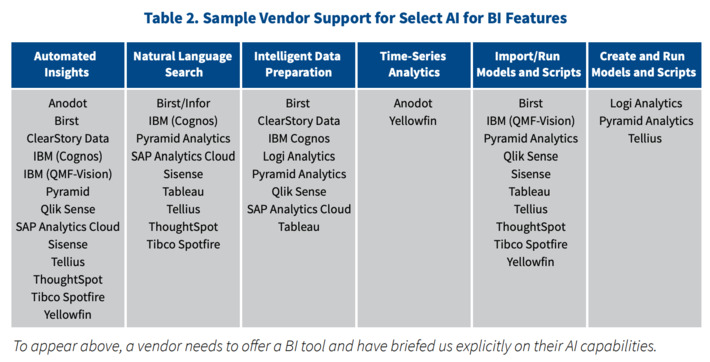

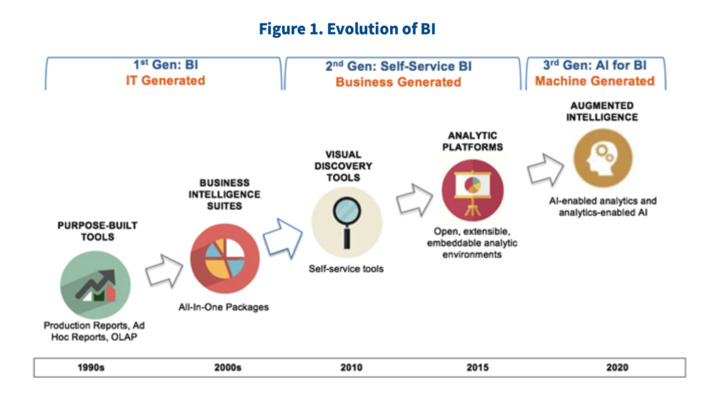




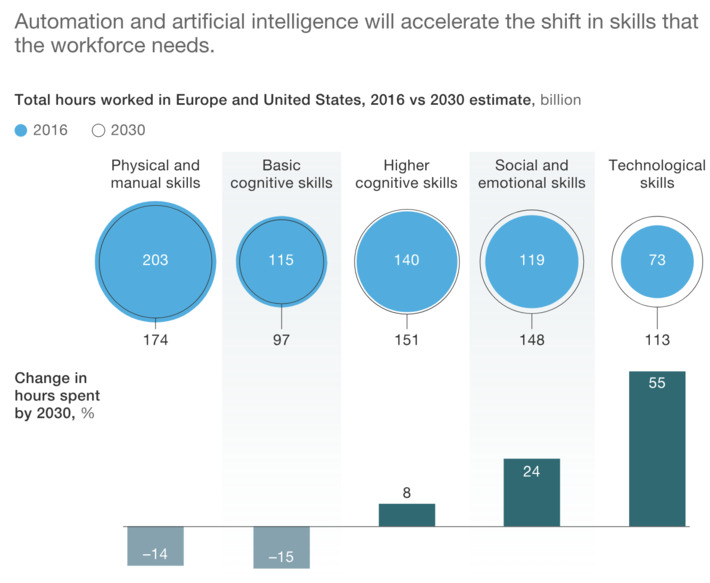
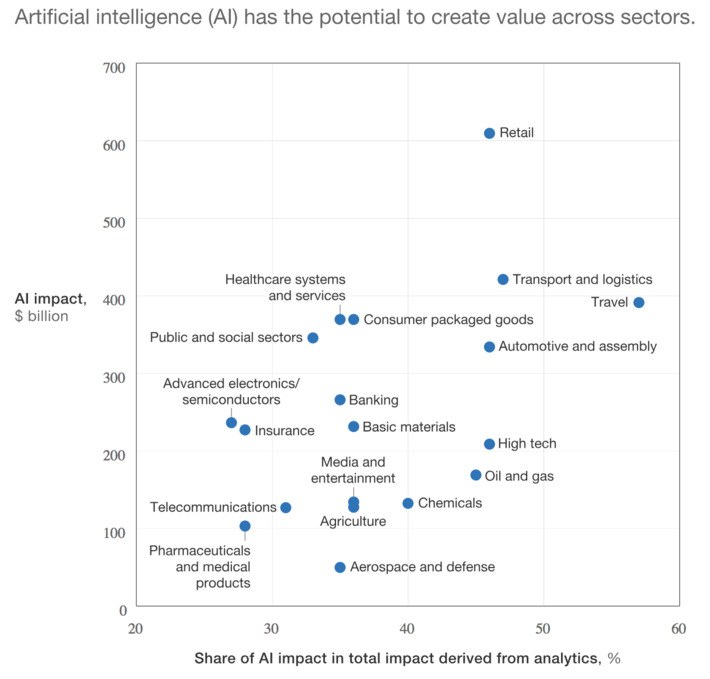
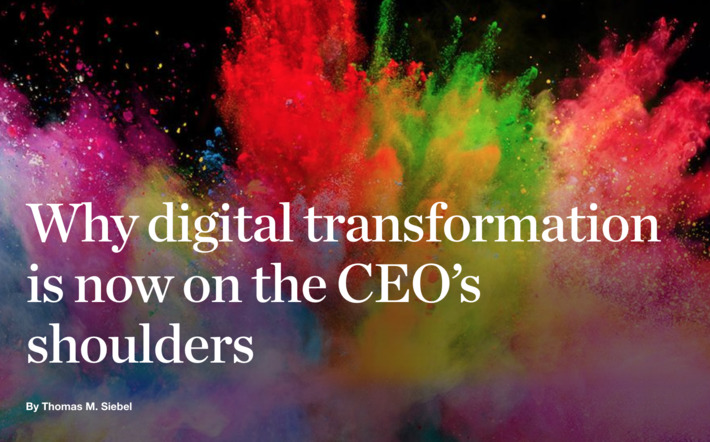
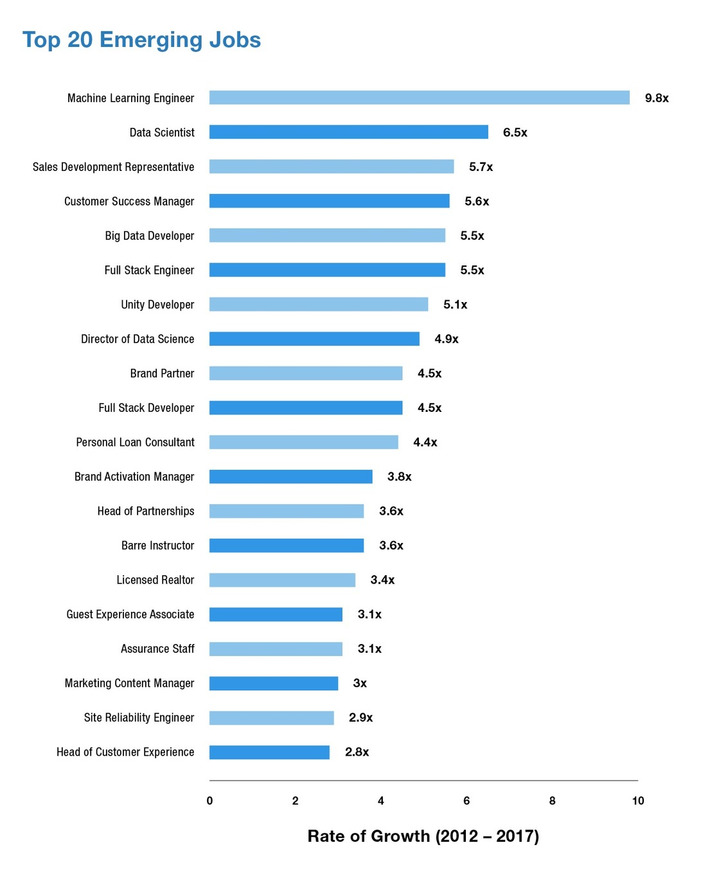
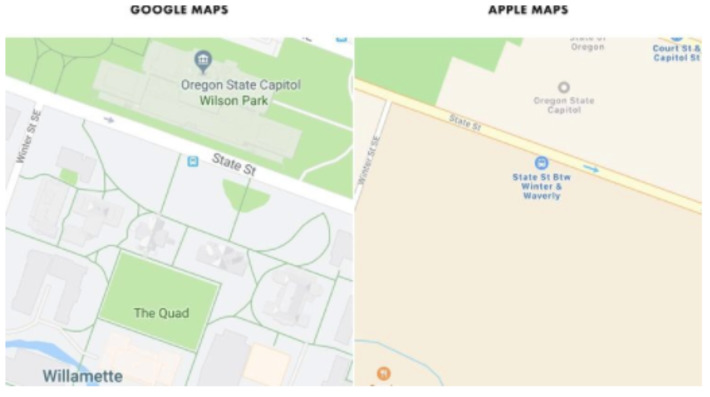
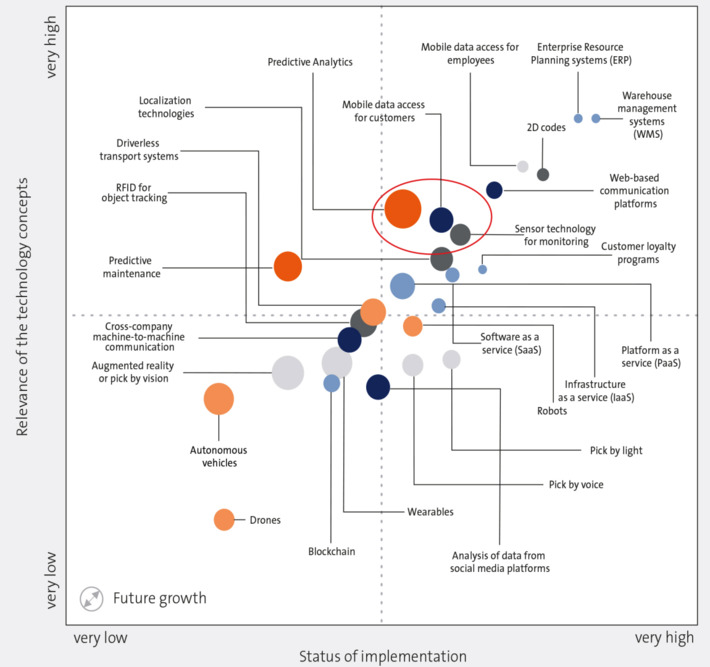
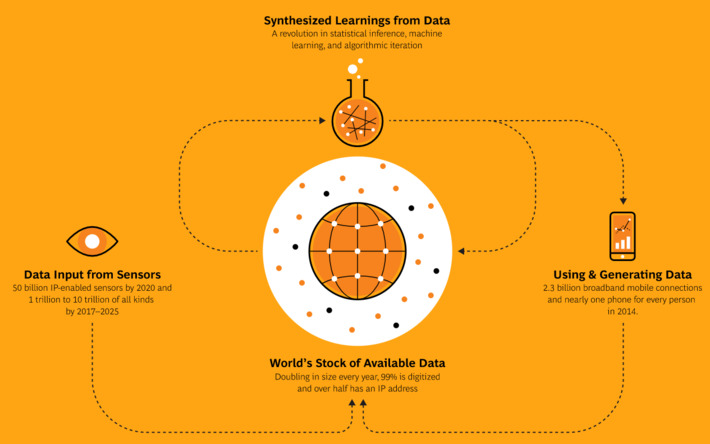


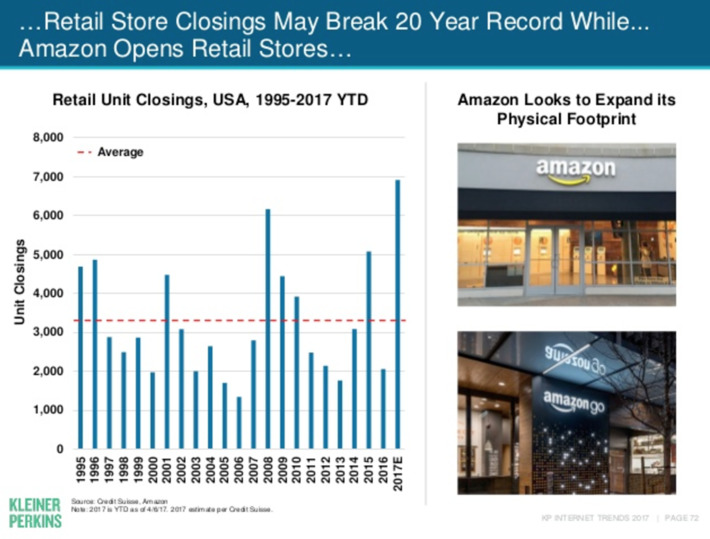



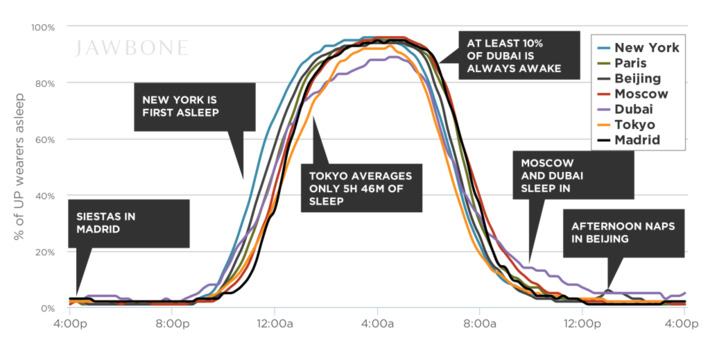



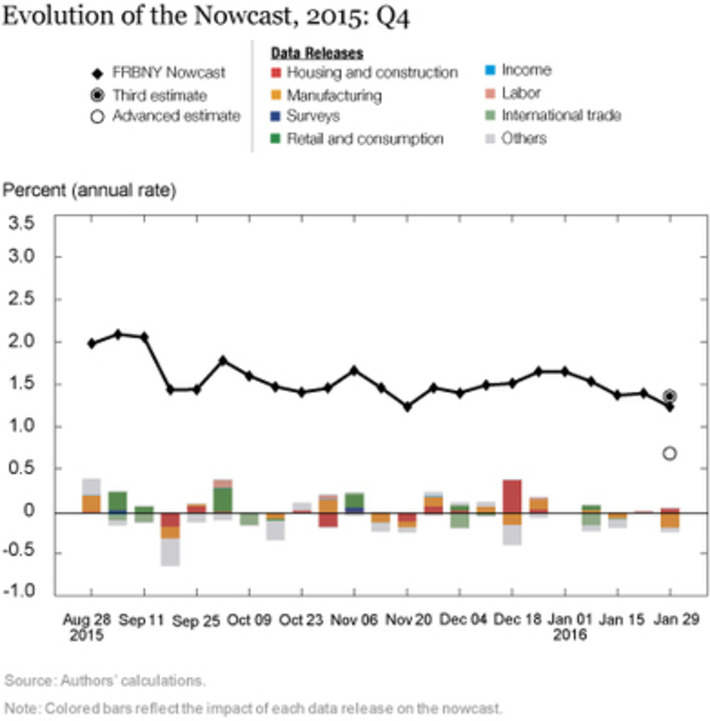


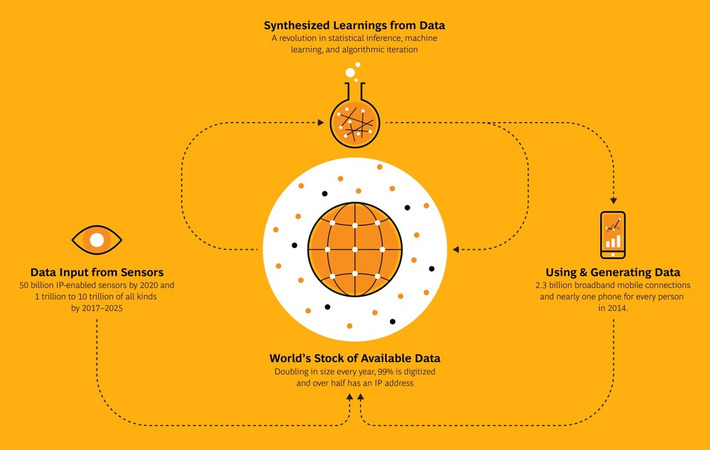









WHY IT MATTERS: an interesting report that puts artificial intelligence (AI) tools as tools to augment Business Intelligence (BI) and evolve the field beyond analytics into prediction. Also provide some good reference diagrams as this one.